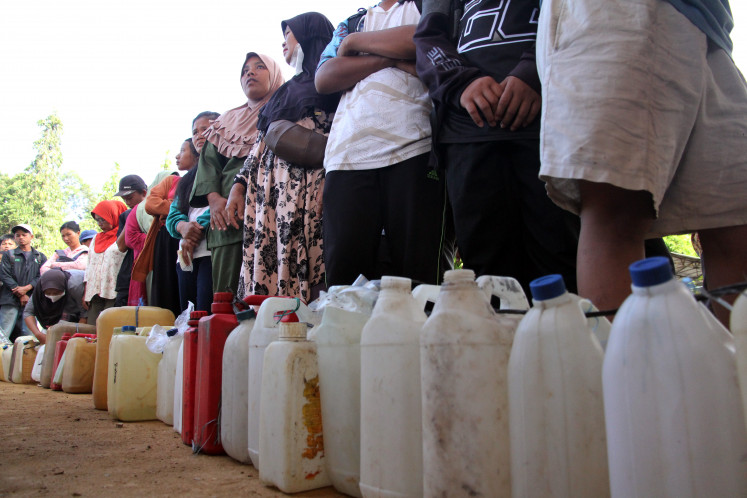Popular Reads
Top Results
Can't find what you're looking for?
View all search resultsPopular Reads
Top Results
Can't find what you're looking for?
View all search resultsDistribution of recovery aid for Aceh uneven: WB
An ineffective relief and recovery system has led to uneven distributions of disaster-relief funds for reconstruction projects post the tsunami disaster in 2004, a World Bank expert said Tuesday
Change text size
Gift Premium Articles
to Anyone
An ineffective relief and recovery system has led to uneven distributions of disaster-relief funds for reconstruction projects post the tsunami disaster in 2004, a World Bank expert said Tuesday.
Jock McKeon, the bank’s Aceh-based financial analyst, said that while the education and health sectors in Aceh had received more financial support than they needed to recover from the tsunami, other sectors, including environment, energy and infrastructure had “consistently” received inadequate funding.
He said NGOs operating in the region had focused too heavily on short-term relief.
“Donors and the government programs tend to look at longer-term reconstruction programs, such as in the energy and infrastructure sectors. However, NGOs have tended toward more short-term projects, like health and education.
“So a lot of the NGOs’ money has gone in particular into these two sectors. There is really an uneven split in where the NGOs channel their money to,” McKeon said on the sidelines of a book launch by the World Bank and the United Nations Office for the Coordination of Humanitarian Affairs (OCHA).
The book, entitled Data Against Natural Disasters, highlights the critical need for effective systems in post-disaster areas to ensure aid effectiveness.
It reviews the success and failures of efforts to establish innovative monitoring systems in post-disaster Guatemala, Haiti, Indonesia, Mozambique, Pakistan and Sri Lanka.
The chapter on Indonesia describes the methodology used by the World Bank to track nearly US$8 billion worth of funds for the post-tsunami reconstruction of Aceh and Nias.
McKeon, who wrote the chapter on Indonesia, said the channeling of the funds had been assessed annually during meetings of the Coordination Forum for Aceh and Nias, organized by the Rehabilitation and Reconstruction Agency (BRR), in which information on the latest issues regarding where the government, donors and NGOs would channel money was shared.
The forum, he said, appeared to have failed to guide NGOs to reallocate their funds.
Priyadi Kardono, data and information division head at the National Disaster Management Agency (BNPB), said the government, through either the BRR or the now-defunct National Disaster Management Coordinating Agency, had yet to maximize its power to coordinate the aid distributions in Aceh.
However, he said the establishment of the BNPB in January would hopefully boost coordination among the government, donors and NGOs.
The tsunami that devastated Aceh and Nias is estimated to have cost a total of US$4.5 billion in losses, or 2.2 percent of Indonesia’s GDP.
The infrastructure sector received most of the reconstruction funds, amounting to $2.87 billion, followed by the social sector (including health and education), $1.55 billion, the productive sector (such as agriculture and enterprises), $645 million and other sectors, $630 million. So far, only about 50 percent of the funds have been channeled.
The post-tsunami reconstruction funds for Aceh and Nias were partly provided by more than 130 donor countries ($2.1 billion), the Indonesian government ($1.9 billion) and NGOs ($1.6 billion).










